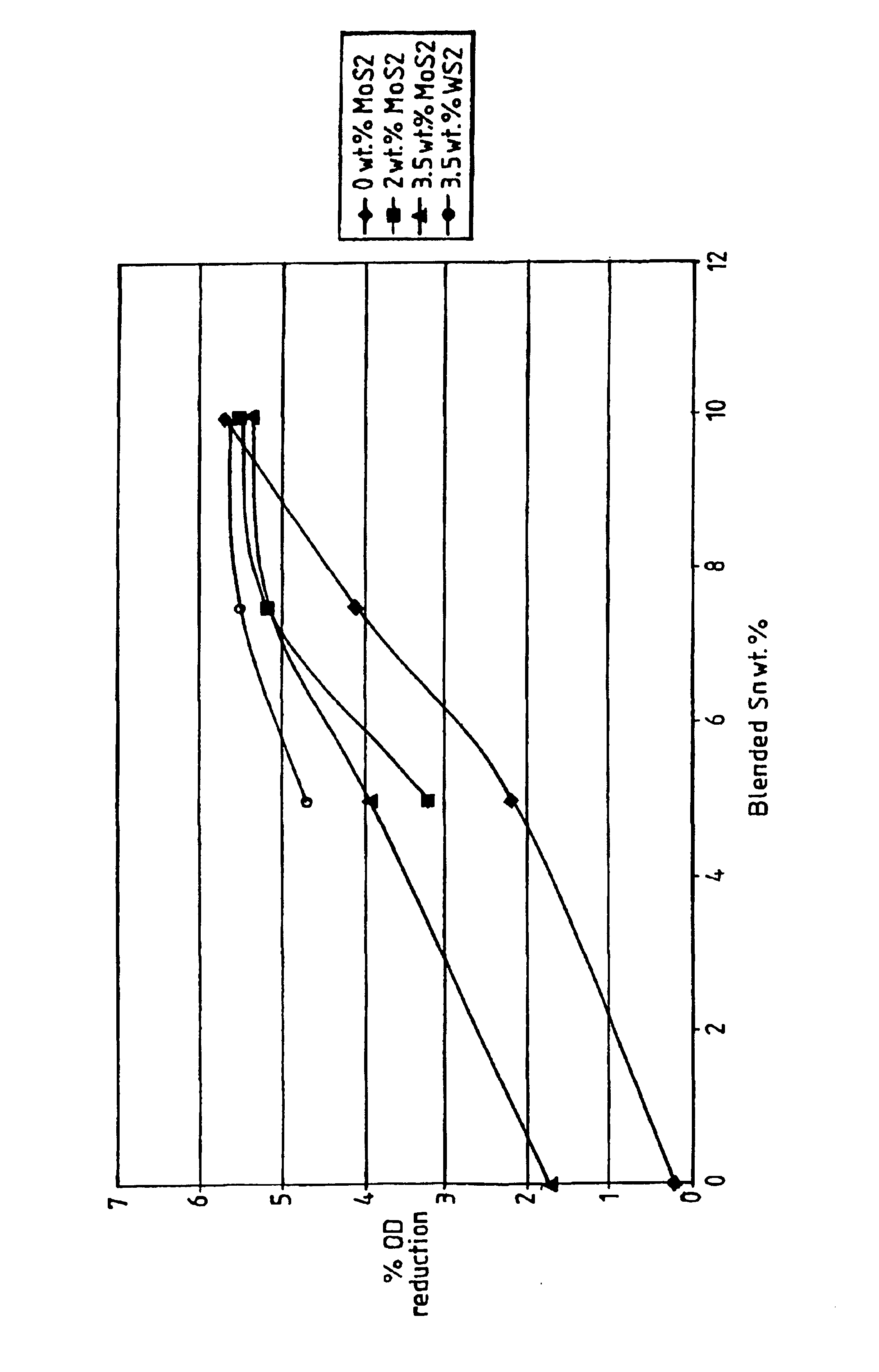Sintered cobalt-based alloys
- Summary
- Abstract
- Description
- Claims
- Application Information
AI Technical Summary
Benefits of technology
Problems solved by technology
Method used
Image
Examples
example 1
[0034]Atomised powder of Tribaloy T-400 (trade name) was mixed for 20 minutes in a Y-cone blender with 10 wt % of tin powder and 3.5 wt % of molybdenum disulphide powder. 1.5 wt % of a fugitive die lubricant, Kenolube (trade name), was also added. The blended powder was uniaxially cold pressed at 770 MPa and sintered in a walking beam furnace for approximately 15 minutes at 1170° C. with an atmosphere of 90% nitrogen:10% hydrogen. Visual and SEM-EDAX analysis revealed that original particle boundaries are not visible and particle shape cannot be determined. The microstructure consisted of Co—Mo—Cr particles approximately 12 microns in diameter in a matrix of Co—Mo—Cr—Sn, with a Co—Sn—Mo—Cr phase at particle boundaries having the appearance of solidified liquid. A Cr—S phase was present as a discrete 10 micron sized phase.
example 2
[0035]Atomised powder of Metco 45VF-NS (trade name) was mixed for 20 minutes in a Y-cone blender with 5 wt % of tin powder and 2 wt % of molybdenum disulphide powder. 1.5 wt % of Kenolube (trade name) die lubricant was also added. The blended powder was uniaxially cold pressed at 770 MPa and sintered in a walking beam furnace for approximately 15 minutes at 1170° C. with an atmosphere of 90% nitrogen:10% hydrogen. Visual and SEM-EDAX analysis revealed that original particle shape can be determined with particles having the composition Co—Cr—Ni—W—Sn. Inter-particle bonding had taken place the boundaries having 5 micron sized precipitates of Cr—Co—W—Ni—Mo and Cr—S—Sn—Co—Ni, with a Sn—Ni—Co—Cr phase having the appearance of solidified liquid. Within the particles there were 5 micron precipitates of Cr—Co—W—Ni—Mo.
example 3
[0036]Atomised powder Stellite 31 (trade name) was mixed for 20 minutes in Y-cone blender with 7.5 wt % of tin powder and 3.5 wt % of molybdenum disulphide powder. 1.5 wt % of Kenolube (trade name) die lubricant was also added. The blended powder was uniaxially cold pressed at 770 MPa and sintered in a walking beam furnace for approximately 15 minutes at 1170° C. with an atmosphere of 90% nitrogen:10% hydrogen. Visual and SEM-EDAX analysis revealed that original particle boundaries were visible due to the formation of precipitates. The particles were composed of Co—Cr—Ni—W—Fe—Sn and the precipitates were a mixture of Cr—S and Cr—W—Co—Mo, with a Sn—Ni—Co—Cr phase having the appearance of solidified liquid.
PUM
| Property | Measurement | Unit |
|---|---|---|
| Temperature | aaaaa | aaaaa |
| Temperature | aaaaa | aaaaa |
| Percent by mass | aaaaa | aaaaa |
Abstract
Description
Claims
Application Information
 Login to View More
Login to View More - R&D
- Intellectual Property
- Life Sciences
- Materials
- Tech Scout
- Unparalleled Data Quality
- Higher Quality Content
- 60% Fewer Hallucinations
Browse by: Latest US Patents, China's latest patents, Technical Efficacy Thesaurus, Application Domain, Technology Topic, Popular Technical Reports.
© 2025 PatSnap. All rights reserved.Legal|Privacy policy|Modern Slavery Act Transparency Statement|Sitemap|About US| Contact US: help@patsnap.com

